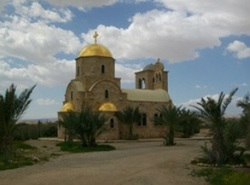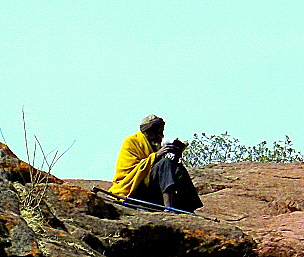

Embrace Foundation Retreat Center
Embrace.Foundation (skype messaging) - 011+1+212.675.4500 (New York)
Click to Email Us
IS IT POSSIBLE?
Global Water Shortages
Global Water Shortages
Global
Restricted Access to Water
780 million people live without clean drinking water
2.5 billion people - including almost one billion children - live without basic sanitation
More than one-third of Africa’s population lacks access to safe drinking water
More than 130 million people in Latin America and the Caribbean lack access to safe drinking water
Between 15 and 20 percent of the water used worldwide is not for domestic consumption, but rather for export
Water and Disease
Every 20 seconds a child under five years of age dies from waterborne illnesses
Half of the world’s hospital beds are occupied by people with an easily preventable waterborne disease
80 percent of all sickness and disease worldwide is related to contaminated water, according to the World Health
Organization
Diarrhea killed more children in the last decade than all armed conflicts since the WW II
Dirty water kills more children than war, malaria, HIV/AIDS and traffic accidents combined
75 percent of the people in Latin America and the Caribbean suffer from chronic dehydration because of poor water
quality
Water Quality
90 percent of wastewater produced in underdeveloped countries is discharged untreated into local waters
80 percent of China’s major rivers are so degraded that they no longer support aquatic life
90 percent of all groundwater systems under major cities in China are contaminated
75 percent of India’s rivers and lakes are so polluted that they should not be used for drinking or bathing
60 percent of rural Russians drink water from contaminated wells
20 percent of all surface water in Europe is seriously threatened
Water Scarcity
More than 400 million Africans now live in water-scarce countries
Unless we change our ways, two-thirds of the world’s population will face water scarcity by 2025
Compared to today, five times as much land is likely to be under “extreme drought” by 2050
By 2030, nearly half of the world’s population - the majority living in underdeveloped countries - will be living in areas of
high water stress
The percentage of the Earth’s land area stricken by serious drought more than doubled between the 1970s and 2005
Rapid melting will reduce the Tibetan glaciers by 50 percent every decade, according to the Chinese Academy of
Sciences
More than two-thirds of Chinese cities face water shortages
90 percent of the European alpine glaciers are in retreat
United States
Water Scarcity
18 States are currently facing droughts, according to the U.S. Drought Monitor
40 percent of all U.S. water withdrawals are for export
Unless measures are taken, California will demand three times more groundwater than can be supplied over the next
100 years
Florida‚ rapid use of groundwater has created thousands of sinkholes that devour anything, houses, cars and
shopping malls, unfortunate enough to be built on top of them
The Western U.S. is facing its warmest decades in over 500 years
In 2007, Lake Superior, the world‚ largest freshwater lake, dropped to its lowest levels in 80 years and the water has
receded more than 15 meters from the shoreline
Lake Mead, the vast reservoir of the Colorado River, has a 50 percent chance of running dry by 2021
Water Quality
35 percent of U.S. rivers and streams are too dangerous for fishing, or drinking
60 percent of U.S. lakes are too dangerous for swimming or drinking because of massive toxic runoff from industrial
farms, intensive livestock operations and the more than 1 billion pounds of industrial weed killer used through the
country each year
Two-thirds of U.S. estuaries and bays are moderately or severely degraded
Four and a half percent of beaches are closed or under advisory at a given time
1.5 million metric tons of nitrogen and phosphorus pollution are carried by the Mississippi River into the Gulf of Mexico
every year
This article is from: FOOD & WATER WATCH
_______________________________________________________________________________
Note: The Embrace Editors have edited out two references to politicians, since Embrace Foundation is not political. We do not support
any politicians in any country and are aware that the vast majority of politicians worldwide are corrupt during this time period, including the
United States and most of Europe
_______________________________________________________________________________
WATER FACTS
Embrace Foundation is a non-profit,
educational foundation set up to create
better understanding between people of
different religions, cultures, traditions and
world philosophies.
Embrace Foundation works to bring leaders
and scholars of world-wide religions,
cultures and philosophies together by
sponsoring forums, seminars, lectures and
developing an international exchange
program. Embrace Foundation is particularly
concerned with reaching the world public
through the media.
Purpose

Donations
Embrace Foundation is an all volunteer
organization. All donations go directly to
programs.
Embrace Foundation does not and has
never given permission to any outside
organization to solicit or receive
contributions on our behalf.
All donations should be made to Embrace
Foundation only via Paypal or by mail. All
donations are tax deductible. A receipt will
be emailed to you. Please click on the Pay
Pal link below to Donate.

Travel As An Interfaith Act
Embrace encourages all who can do so, to
learn about other traditions and cultures by
traveling as “Grassroots Diplomats.” We
hope that people every where become life
long students of our world-wide humanity.
“ In every man there is something wherein I
may learn of him, and in that I am his pupil.”
R.W.Emerson


Embrace Humanity

Great Visions - TV
Guests are: Swami Satchidananda &
the Rt. Reverend Dean Parks Morton

Embrace Archives
Limited Editions Gallery
Umrah - Jordan
Embrace Sacred Places

Monastery of Bahira - Syria
Embrace Foundation Universal

Monk Reading - Ethiopia
Thank you for making a donation.
. . . Great Lakes Water To Be Sold To China As Half The U.S. Faces Extreme
Water Crisis
By Michael Snyder
. . At a time when the United States is facing the greatest water crisis that it has ever known, Obama is allowing water
from the Great Lakes to be drained, bottled and shipped to China and other countries around the globe. Right now, the
Great Lakes hold approximately 21 percent of the total supply of fresh water in the entire world. Considering the fact that
global water supplies are becoming extremely tight, that is an invaluable resource. One recent UN report projected that two
thirds of the people in the world will be dealing with “water stress” and 1.8 billion people will be facing “absolute water
scarcity” by the year 2025. So why are we allowing foreign corporations such as Nestle to make millions upon millions of
dollars pumping water out of the Great Lakes and selling it overseas? Considering the massive worldwide water crisis that
we know is coming in the years ahead, shouldn’t we be doing everything that we can to protect this precious natural
resource?
Most Americans don’t realize this, but earlier this year water levels in Lake Huron and Lake Michigan were at their lowest
levels ever recorded. The following is from a recent article by Suzanne Eovaldi…
“Two of the Great Lakes have hit their lowest water levels EVER RECORDED,” the US Army Corps of Engineers
reported early this year. Corps measurements taken in January of 2013 “show Lake Huron and Lake Michigan
have reached their lowest ebb since record keeping began in 1918.” The chief watershed hydrology expert
warns Americans that “We’re in an extreme situation.”
So what is causing all of this? Well, of course most of the water that leaves the Great Lakes is lost by evaporation. But the
fact that water is being steadily pumped out of the Great Lakes and sold overseas is certainly not helping matters…
“Plunging water levels are beyond anyone’s control,” says another expert, James Weakley. But in one of our
most popular posts, last year we warned, “Lake Michigan water is being shipped by boat loads over to China! By
using a little known loophole in the 2006 Great Lakes Compact, Obama minions are allowing Nestle Company to
export precious fresh water out of Lake Michigan to the tune of an estimated $500,000 to $1.8 million per day
profit.”
All of this is happening at a time when the U.S. is getting ready to deal with the greatest water crisis this nation has ever
known. For example, according to a Reuters article from just a few weeks ago, the state of California is currently
experiencing the driest year ever recorded…
To nurture his acres of pistachio trees, Tom Coleman has long relied on water from California’s mountain-ringed reservoirs,
fed by Sierra streams and water pumped from the massive Sacramento-San Joaquin Delta.
But the driest year on record has left the reservoirs so depleted - and the delta so fragile - that state water officials say they
may be able to provide just 5 percent of the water he and others were expecting for next year.
This water shortage is causing massive problems all over the state. Just check out how a recent Fresno Bee article
described what is happening to Pine Flat Reservoir…
Pine Flat Reservoir is a ghost of a lake in the Fresno County foothills - a puddle in a 326 billion gallon gorge.
Holding only 16% of its capacity, Pine Flat is the best example of why there is high anxiety over the approaching wet
season.
Gone is the healthy water storage that floated California through two dry years. Major reservoirs around the state need gully-
washing storms this winter.
And further east, similar things are happening. Lake Powell is fed by the once mighty Colorado River, and at this point the
flow of water into the lake has been reduced to a “trickle”…
After 14 years of drought, Lake Powell is less than half full.
Water flows into Lake Powell, nestled between Utah and Arizona, from high in the Rocky Mountains via the Colorado River.
More than 30 million people in seven states depend on the mighty Colorado for water to grow crops, fuel power plants and
keep cities such as Las Vegas alive. But this year, the worst drought in a century has slowed the flow to a trickle.
In August, the federal Bureau of Reclamation cut, by 9 percent, the amount of water people in the southwestern United
States could draw from Lake Powell. As states and counties squabble over their allotment of water in the coming years,
hydroelectric plants (including the one on the Hoover Dam) could idle, and farmers are bracing for reduced crop production.
And most Americans do not realize this, but the Colorado River does not run all the way to the ocean any longer. If
something is not done soon, even the Hoover Dam could be forced to shut down. For much more on this, please see this
article.
Just recently, the Huffington Post ran an article entitled “These 11 Cities May Completely Run Out Of Water Sooner
Than You Think“. According to that piece, some of the cities that are heading for a massive water crisis are not cities that
you would normally think of…
-Salt Lake City, Utah
-Lincoln, Nebraska
-Cleveland, Ohio
-Miami, Florida
-Atlanta, Georgia
-Washington, D.C.
-El Paso, Texas
-San Antonio, Texas
-San Francisco Bay Area, California
-Houston, Texas
-Los Angeles, California
But those cities are far from alone. The truth is that pretty much the entire western half of the country is drying up. the
following list of 15 facts about the coming water crisis is from one of my previous articles entitled “Dust Bowl Conditions
Are Literally Returning To The Western Half Of The United States“…
1. The Ogallala Aquifer is being drained at a rate of approximately 800 gallons per minute.
2. According to the U.S. Geological Survey, “a volume equivalent to two-thirds of the water in Lake Erie” has been
permanently drained from the Ogallala Aquifer since 1940.
3. Decades ago, the Ogallala Aquifer had an average depth of approximately 240 feet but today the average depth is just 80
feet. In some areas of Texas, the water is gone completely.
4. Scientists are warning that nothing can be done to stop the depletion of the Ogallala Aquifer. The ominous words of
David Brauer of the Ogallala Research Service should alarm us all…
“Our goal now is to engineer a soft landing. That’s all we can do.”
5. According to a recent National Geographic article, the average depletion rate of the Ogallala Aquifer is picking up
speed…
Even more worrisome, the draining of the High Plains water account has picked up speed. The average annual depletion
rate between 2000 and 2007 was more than twice that during the previous fifty years. The depletion is most severe in the
southern portion of the aquifer, especially in Texas, where the water table beneath sizeable areas has dropped 100-150 feet;
in smaller pockets, it has dropped more than 150 feet.
6. According to the U.S. National Academy of Sciences, the U.S. interior west is now the driest that it has been in 500
years.
7. Wildfires have burned millions of acres of vegetation in the central part of the United States in recent years. For example,
wildfires burned an astounding 3.6 million acres in the state of Texas alone during 2011. This helps set the stage for huge
dust storms in the future.
8. Unfortunately, scientists tell us that it would be normal for extremely dry conditions to persist in parts of western North
America for decades. The following is from an article in the Vancouver Sun…
But University of Regina paleoclimatologist Jeannine-Marie St. Jacques says that decade-long drought is nowhere near as
bad as it can get.
St. Jacques and her colleagues have been studying tree ring data and, at the American Association for the Advancement
of Science conference in Vancouver over the weekend, she explained the reality of droughts.
“What we’re seeing in the climate records is these megadroughts, and they don’t last a decade-they last 20 years, 30
years, maybe 60 years, and they’ll be semi-continental in expanse,” she told the Regina Leader-Post by phone from
Vancouver.
“So it’s like what we saw in the Dirty Thirties, but imagine the Dirty Thirties going on for 30 years. That’s what scares those
of us who are in the community studying this data pool.”
9. Experts tell us that U.S. water bills are likely to soar in the coming years. It is being projected that repairing and expanding
our decaying drinking water infrastructure will cost more than one trillion dollars over the next 25 years, and as a result our
water bills will likely approximately triple over that time period.
10. Right now, the United States uses approximately 148 trillion gallons of fresh water a year, and there is no way that is
sustainable in the long run.
11. According to a U.S. government report, 36 states are already facing water shortages or will be facing water shortages
within the next few years.
12. Lake Mead supplies about 85 percent of the water to Las Vegas, and since 1998 the level of water in Lake Mead has
dropped by about 5.6 trillion gallons.
13. It has been estimated that the state of California only has a 20 year supply of fresh water left.
14. It has been estimated that the state of New Mexico only has a 10 year supply of fresh water left.
15. Approximately 40 percent of all rivers in the United States and approximately 46 percent of all lakes in the United
States have become so polluted that they are are no longer fit for human use.
Are you starting to get the picture?
If things don’t turn around soon, we are going to be facing an absolutely crippling water crisis in this country.
And according to recent forecasts, it appears that drought conditions may soon get even worse in the Southeast and the
Southwest…
Ongoing winter storms won’t be doing much to relieve some drought-stricken areas of the U.S. In fact, conditions could get
worse in the Southwest and Southeast, according to the National Oceanic and Atmosphere Administration.
NOAA last week forecast below-average precipitation for those regions this winter, meaning that “after some relief during
the past few months,” the Southwest’s three-year drought is likely to redevelop and spread to the Southeast.
Sadly, most Americans are not aware of any of these things.
They just assume that there will always be plenty of fresh water for all of us to use just like there always has been.
But times are changing rapidly.
This Article is from: The American Dream

Virginia (Embrace), Dr.Anwar Barkat (World Council of Churches, UN) & Imam I.H. Kauser
Embrace Archives
Great Visions TV
Anne-Stuart & Ajata (Hosts), with Rabbi Gelberman & Dr.Jayaraman
Anne-Stuart & Ajata (Hosts), with Rabbi Carlebach & Imam Kauser
Embrace Foundation International
- Great Visions TV
- Inspirations
- Media
- Possibilities
- Astrophysics, Quantum Physics & The Nature of Reality
- Deconstructing Nuclear Fission & Nuclear Waste
- Defense Industry as Community Builders
- Defense Industry As Energy Providers
- Global Water Shortages
- Innovative Technology
- Intelligent Communities & Development
- Pentagon & Non-Western Nations
- Recreating
- Resource Based Population
- Sharing Community Resources
- Protecting Human Rights
- Spiritual Ecology
- Syria
- Write to Us



